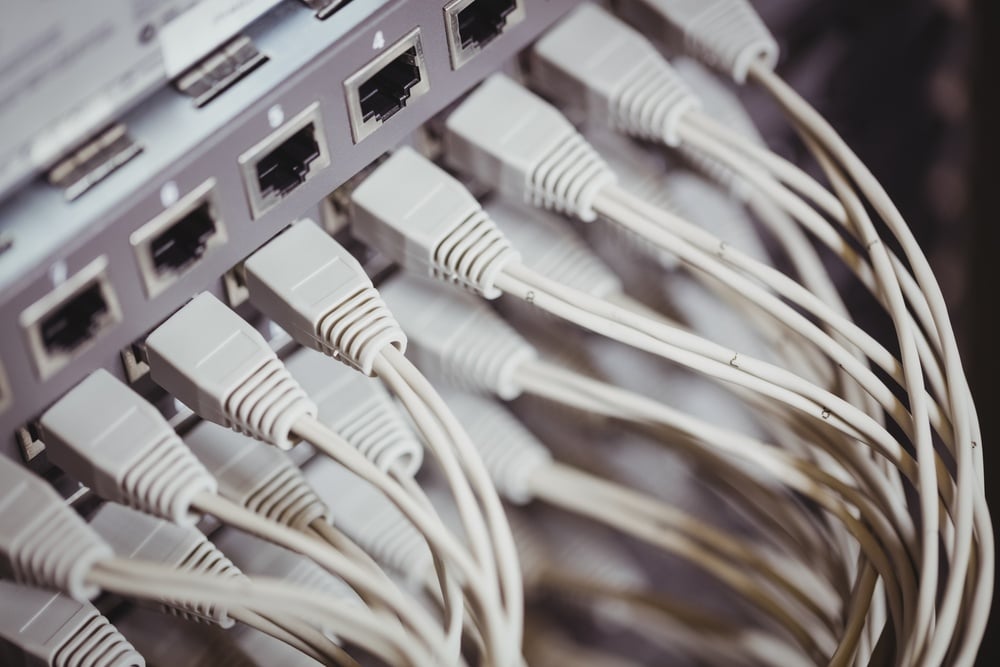

Lack of budget, unclear path to ROI, imperfect strategic vision, interoperability problems. These are just a few of the reasons why the shift to Industrial Ethernet has been slow. But while industrial leaders could make do without Industrial Ethernet in the past, it’s becoming increasingly essential.
As your competitors invest in machine learning and big data to optimize operations, falling behind on Industrial Ethernet adoption is the last thing you want. But Industrial Ethernet isn’t the only concern, anymore.
In addition to Industrial Ethernet advancement, you have to prepare your network for the Industrial Internet of Things (IIoT/Industry 4.0). Together, Industrial Ethernet and IIoT will help you take advantage of your data to spot inefficiencies faster, support business intelligence efforts, and cut costs in the long run.
Whether you’re working in logistics, on a factory floor, or within the operations of critical infrastructure, the primary driver of IIoT is the need for data.
Smarter machines will be able to unlock greater potential in quality control, supply chain traceability, and overall uptime—but only if you can create a highly efficient peer-to-peer architecture.
You might wonder how this is different from the real-time control, automation, and sensor data you’ve used in the past. These data-driven capabilities aren’t new, but they’ve never been available seamlessly across your network.
The traditional master-slave architecture used in so many industrial settings won’t support IIoT capabilities. You need to break down the silos of your industrial network and make it easy for anyone in the organization to access data necessary to drive business results.
And this is where so many IIoT efforts fall flat. You understand the many benefits of data access and seamless connectivity. But when it comes to executing on the factory floor, things are bit more complicated.
From remote monitoring to more advanced automation capabilities, you need an underlying network architecture capable of meeting the demands to serve real-time data access to business applications. That’s where Industrial Ethernet comes back into the picture.

There’s one roadblock to IIoT that hasn’t been mentioned to this point. Unlike in IT settings, OT leaders can’t afford even minor data inconsistencies or downtime. Synchronization, non-existent latency, and network reliability can literally be the difference between life and death in critical infrastructure scenarios.
If you can’t move to Internet connectivity in the industry network while maintaining these requirements, you keep operating with an aging infrastructure. But if you want the benefits of IIoT, it’s time to overcome these challenges.
The benefit of Industrial Ethernet (when deployed properly) is that it’s deterministic. With protocols like PROFINET, EtherNet/IP, and EtherCAT, you can ensure messages sent from IIoT end-devices across the network are transmitted with 100% reliability. And better yet, you can achieve speeds up to 1G with fiber optic cables as opposed to the lower speeds of traditional infrastructure.
Without these protocols, you would need multiple translation solutions and communication switches throughout the industrial infrastructure to make peer-to-peer connection possible. But thanks to standardized Ethernet protocols, you can lay the groundwork for successful IIoT projects.
The only remaining challenge is shifting to Industrial Ethernet in a way that makes interoperability simple and guarantees 100% visibility of traffic.
If the inline security tool goes off-line, the TAP will bypass the tool and automatically keep the link flowing. The Bypass TAP does this by sending heartbeat packets to the inline security tool. As long as the inline security tool is on-line, the heartbeat packets will be returned to the TAP, and the link traffic will continue to flow through the inline security tool.
If the heartbeat packets are not returned to the TAP (indicating that the inline security tool has gone off-line), the TAP will automatically 'bypass' the inline security tool and keep the link traffic flowing. The TAP also removes the heartbeat packets before sending the network traffic back onto the critical link.
While the TAP is in bypass mode, it continues to send heartbeat packets out to the inline security tool so that once the tool is back on-line, it will begin returning the heartbeat packets back to the TAP indicating that the tool is ready to go back to work. The TAP will then direct the network traffic back through the inline security tool along with the heartbeat packets placing the tool back inline.
Some of you may have noticed a flaw in the logic behind this solution! You say, “What if the TAP should fail because it is also in-line? Then the link will also fail!” The TAP would now be considered a point of failure. That is a good catch – but in our blog on Bypass vs. Failsafe, I explained that if a TAP were to fail or lose power, it must provide failsafe protection to the link it is attached to. So our network TAP will go into Failsafe mode keeping the link flowing.
Single point of failure: a risk to an IT network if one part of the system brings down a larger part of the entire system.
Heartbeat packet: a soft detection technology that monitors the health of inline appliances. Read the heartbeat packet blog here.
Critical link: the connection between two or more network devices or appliances that if the connection fails then the network is disrupted.